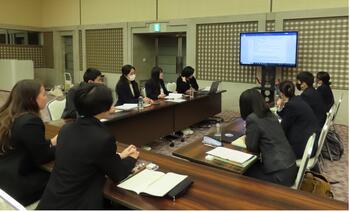China Scholars Program Now Accepting Applications for Fall 2025
China is at the center of global dynamics today. What does its new superpower status mean for the world? For China? How will the worsening U.S.ŌĆōChina tariffs affect world trade? Is ChinaŌĆÖs clean energy leadership the key to the worldŌĆÖs climate crisis or will China remain the worldŌĆÖs top emitter of greenhouse gases? Would China go to war over Taiwan? Would the U.S.? What are ChinaŌĆÖs internal challenges? Is this ChinaŌĆÖs century?
U.S. high school students wondering about these questions and more, who want to explore the nuance and history behind the headlines, in conversation with diverse experts and classmates, are invited to apply for 91│į╣ŽŌĆÖs China Scholars Program.
Fall 2025 China Scholars Program: Introduction to Contemporary China
Application period: April 22 to June 15, 2025
Tuition: $2500
Program dates: August 28 ŌĆō December 20, 2025
This online, college-level course for advanced 10th through 12th graders provides an overview of ChinaŌĆÖs internal dynamics and recent history, as well as its complicated relationship with the United States, with critical, timely insights into this superpower of the 21st century.
Kristina Danilenko (Huntersville, NC, Fall 2024 CSP alum) observes, ŌĆ£[W]ith all the generalizations and inaccuracies I hear about China (whether it be its government or people as a whole) due to the volatile political environment right now, taking your class was especially valuable in that IŌĆÖm able to navigate through these swirling narratives and think critically about the information IŌĆÖm consuming.ŌĆØ
Each week, CSP students engage with leading scholars and experts on Zoom, read deeply on that weekŌĆÖs topic, and engage in analytical discussion with classmates. In addition to weekly written assignments, students conduct independent research, which culminates in an academic paper. Students will also have an opportunity to meet online with Chinese students enrolled in the Stanford e-China Program.
The programŌĆÖs interdisciplinary nature encourages wide-ranging student research topics. Recent papers have addressed education (ŌĆ£Gaokao: How Effective Is the Gateway to Chinese Meritocracy?ŌĆØ); economics (ŌĆ£Impacts of TaiwanŌĆÖs Microchip Monopoly on U.S.ŌĆōChina Economic RelationsŌĆØ); environmental issues (ŌĆ£Till the Well Runs Dry: Water Shortages in Northern ChinaŌĆØ); cultural politics (ŌĆ£Children and Politics: How ChildrenŌĆÖs Cinema Shapes ChinaŌĆÖs YouthŌĆØ; ŌĆ£MaoŌĆÖs Playlist: Music of the Cultural RevolutionŌĆØ); as well as language, demographics, literature, and beyond.
ŌĆ£[My son is] getting to watch his research topic on tariffs and China play out in real time (for better or worse),ŌĆØ comments Jaime Zollars, parent of Griffin Zollars (Newbury Park, CA, Fall 2024 CSP alum). ŌĆ£The course has inspired many conversations since, and it really gave him a working base knowledge, strengthened his skills, and solidified his interest in continuing to explore Chinese studies and language alongside economics in college!ŌĆØ
CSPŌĆÖs rigor helps students build a strong foundation for college and future careers. ŌĆ£This course only solidified my desire to pursue studies pertaining to Chinese politics and history, particularly within the realm of international relations,ŌĆØ reports one Fall 2024 alum. ŌĆ£Yet, even for those whose primary academic aspirations lie elsewhere, the abilities you develop during CSPŌĆöwhether it involves a deeper understanding of China or building cross-cultural skillsŌĆöare ones that can be applied across a wide range of fields and pursuits both within and beyond academia.ŌĆØ
As ChinaŌĆÖs influence expands, the U.S. is heading towards . CSP alums may ultimately find themselves in high demand.
For more information, please see . Or contact Tanya Lee with questions.
The China Scholars Program is one of several online courses offered by 91│į╣Ž.
To stay updated on 91│į╣Ž news, and follow us on , , and .
Read More
Applications are open for CSPŌĆÖs ŌĆ£Introduction to Contemporary ChinaŌĆØ course. Interested students must apply by June 15, 2025.






















